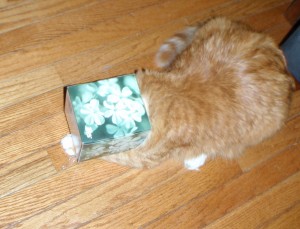I hear people talk about writer’s block all the time. I’m familiar with it. I’m sure you are familiar with it too. But as I work on my edits, I’m realizing that there is a worse block out there – editor’s block.
Writing is fun. You are creating a new world, creating new characters, making something new. Editing seems to be the antithesis to creating. Instead of making tons of new things, you are taking away from your creation. Sure, you are taking away to make it better, but it’s hard to see that while neck-deep in the editing process.
The dreaded cuts
No one wants to cut words they’ve spent countless hours writing. This is one reason why it is so important to focus on getting the story down in the first draft and waiting to fix the writing until the second, third, fourth, etc. draft. Why spend countless hours perfecting one sentence when you may end up cutting that entire scene?
Even if you aren’t cutting well-crafted prose, you may still find cuts difficult. And this is where I’m at in the process. I am making cuts to scenes I felt attached to when I wrote them but now I see that they don’t fit in with the natural flow of my story. When you are in the midst of writing, things seem like they fit. But the writing process takes longer than the reading process; you are likely to forget details or even characters, leaving loose ends and contradictions. In rereading your story, you might realize, like I did, that the plot starts to deviate from the original plan. Some deviation may be good – it can mean that the story does not naturally flow the way you originally planned. But with deviation comes reworking of the plot, and with reworking comes cuts, including character cuts in some instances.
Splicing and dicing
A coworker of mine was recently in a television show. When it aired, she was shocked to see that several sentences were spliced and edited into one sentence. Unless you had been there during her interview, you would never have been able to guess where and how the cuts/edits were made. Well, guess what? Sometimes you have to do the same thing with your writing. And this is where things get really scary. I can deal with making cuts here and there, but when you start moving around large chunks of text, cutting some things, inserting half of a scene from chapter 12 into a part of a scene from chapter 2 and another part from chapter 7, the editing process can seem daunting and a bit frightening. I think this more than the cuts is where my editing block really stems from. Once you start changing the structure, you are really committing to the edits. You are committing to the changes in the story. And you are committing to the new plan you devised for the plot.
Overcoming editor’s block
Of course, editing doesn’t have to be scary. Here are two tricks to get you through the process:
- Save every version – I have drafts 1.1 and 1.2 as well as 2.1 and I just started 2.2. Whenever I make any big changes, I save a new draft. This way if I change my mind, I can go back to a previous draft. This may seem like commitment phobia, but I see it as smart. You never know when you might decide that a scene or character or setting actually does work. Each rewrite changes the story, and something that didn’t work in one draft could end up working perfectly in a future draft.
- Just dive in – Obvious, right? But this takes a lot of guts. You know what though? So does being a writer. And sadly, part of writing is editing, so if you are serious about your dream, then you have to take the plunge. You just may end up loving the end result. Need a little motivation? Check out this post by Alexis Grant on How to Find the Guts to Take a Leap.
Do you suffer from editor’s block? Do you have any tips on how to conquer it?
For more on editing, check out Andrea Mack’s blog post over at MiG Writers, Revision is All About Taking Risks.



Thanks for the shout-out! And LOVE the look of your blog. Fabulous colors!